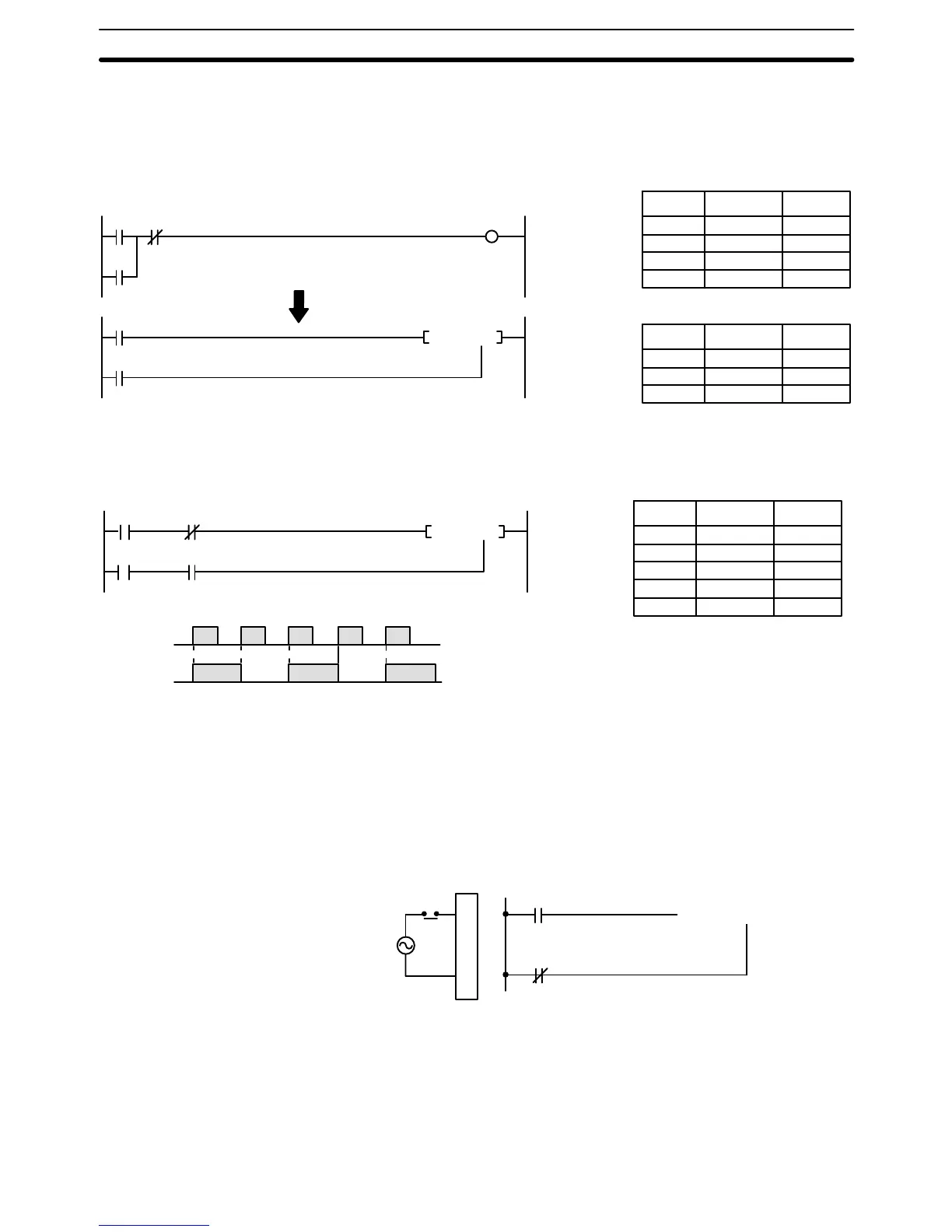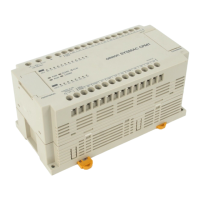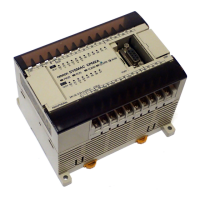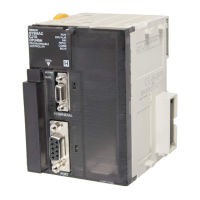133
KEEP(011) operates like the self-maintaining bit described in
4-7-4 Self-main-
taining Bits (Seal)
. The following two diagrams would function identically, though
the one using KEEP(011) requires one less instruction to program and would
maintain status even in an interlocked program section.
00000 LD 000002
00001 OR 000500
00002 AND NOT 000003
00003 OUT 000500
00000 LD 000002
00001 LD 000003
00002 KEEP(011) 000500
S
R
Address Instruction Operands
Address Instruction Operands
0005
00
0000
02
0005
00
0000
03
0000
02
(011)
KEEP 000500
0000
03
Example KEEP(011) can be used to create flip-flops as shown below.
0000
(011)
KEEP 000001
0000
00
00
0000
01
0000
01
↑
↑
000000
000001
00000 LD 000000
00001 AND NOT 000001
00002 LD 000000
00003 AND 000001
00004 KEEP(011) 000001
Address Instruction Operands
Precautions Any output bit is generally used in only one instruction that controls its status.
Never use an input bit in a normally closed condition on the reset (R) for
KEEP(011) when the input device uses an AC power supply. The delay in shut-
ting down the PC’s DC power supply (relative to the AC power supply to the input
device) can cause the operand bit of KEEP(011) to be reset. This situation is
shown below.
Input Unit
A
NEVER
S
(011)
[ KEEP 120000 ]
R
A
Bits used in KEEP are not reset in interlocks. Refer to the
5-8 INTERLOCK and
INTERLOCK CLEAR: IL(002) and ILC(003)
for details.
Note: Refer to page 115 for general precautions on operand data areas.
Flags There are no flags affected by this instruction.
Bit Control Instructions Section 5-7

